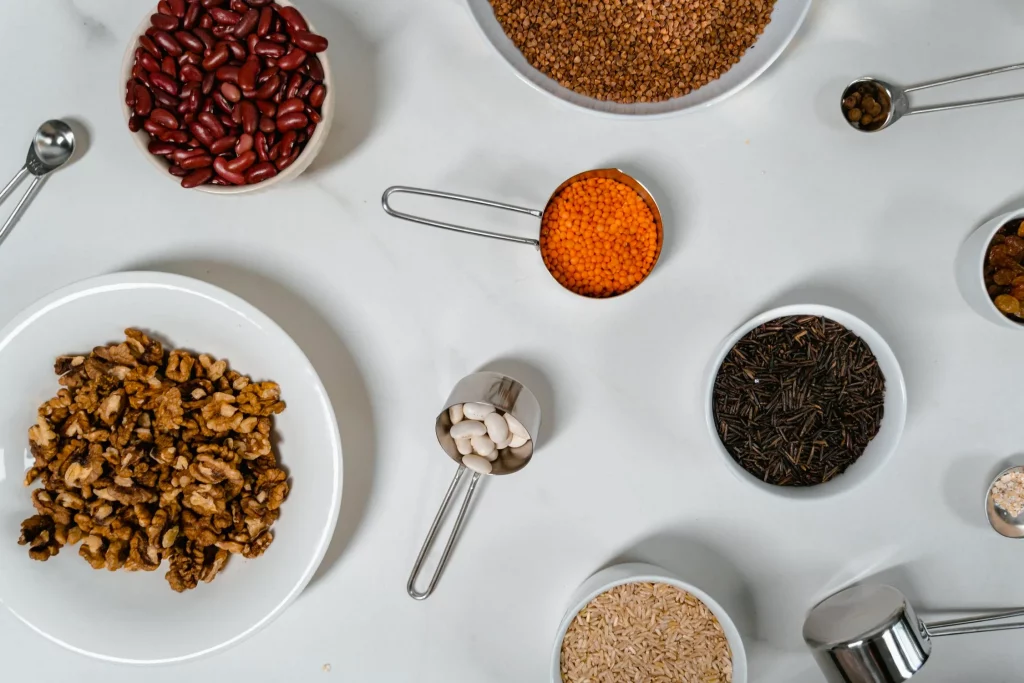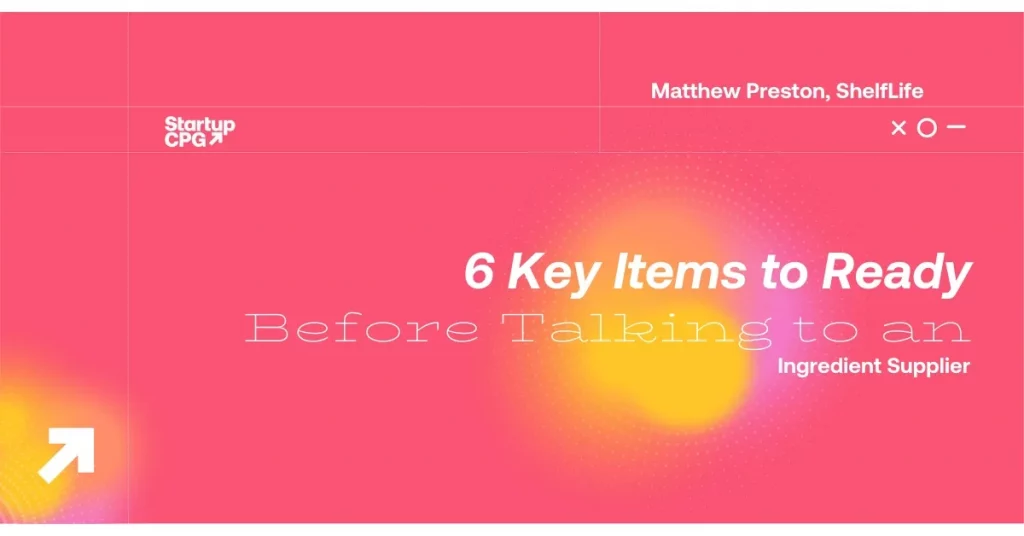6 Key Things to Ready Before
Approaching Ingredient Suppliers
Matthew Preston has over 7 years experience running supply chain, logistics, and procurement for large-scale operations in food and beverage manufacturing. Currently, he works with New York-based start-up ShelfLife – the b2b marketplace for wholesale ingredients. ShelfLife builds software to make it easy for buyers to discover, manage and order from best-in-class suppliers – encouraging radical transparency and democratizing access to information.
With supply chain delays, inflation, and global COVID hot spots, it’s never too early to start thinking about shoring up your ingredients supply lines for your upcoming production run or new product launch. As a buyer, you should often begin planning 12 to 18 months before you need to have the raw materials on hand for production. Whether you’re new to food supply chain or launching a new product, here is a short list of what you’ll need to prepare before engaging a supplier.
1. Non-Disclosure Agreement (NDA)
Yes, an NDA – the necessary evil. While some people may argue NDA’s aren’t always necessary, in our experience, NDA’s have become the norm in the food startup world. At the very least, they set the tone for confidentiality between both parties. Invariably, there will be sensitive business data that you are going to share (sales, IP, co-packers, recipes). As a food company, this information is your lifeblood and moat! Best to get an agreement in place and protect it. Here’s a template to get you started (and avoid some unnecessary legal fees).
2. Elevator Sales Pitch – Supplier Style
Being the buyer has its perks, namely suppliers will (generally) pick up your phone call. However, as an early-stage company in a competitive market, you certainly need to come prepared with a polished sales pitch. Suppliers get cold calls all the time, and certain ingredients (sunflower oil) are exceedingly scarce. It’s important to get the supplier to buy into your vision and the opportunity for growth. What is your company’s vision? Have you been funded? What makes you different from every other startup out there? Why should they care? What does long-term growth look like? Suppliers that understand where your business is headed are more likely to sell and pick up the phone when you need them.

3. Shopping List: Specification + Volume Needs
Being buttoned up and informed on ingredient specifications and volumes will go a long way in building a supplier’s trust in your brand. Let’s say you need an assortment of nut butters. Flavor and consistency can vary widely, which could mean the difference between keeping your customers or not – or even worse, staying on good terms with your co-packer or not. Is your almond butter made from dry roasted almonds? Are they blanched first? What requirements does your co-packer have? It’s not out of the question to even establish a color baseline based on a hex code, although almond butter color can be set using an L value (40-65) using the CR-A50 Konica Minolta test method.
In terms of your projected needs, suppliers always like it if you have numbers. Case level volume is OK, just be upfront and honest! It’s best to buy ingredients that are “generic” – easy to find and easy for your supplier to re-sell. If the ingredients are readily available, and not organic, you can stay conservative with your purchasing volumes since you can always get more. As a rule of thumb, it’s customary to use pounds as the consistent unit of measure, even when you’re talking about volumetric ingredients, like lemon juice. Believe me, it’ll save a ton of head-ache down the road for everyone involved.
In short, ingredients can get complicated. Knowing the must-haves for your ingredients out of the gate will be a nice way to establish supplier relationships!
4. Logistics Plan
Communicating to your supplier what your supply chain looks like and what type of service you need is a very helpful upfront conversation to have. Answering this shortlist of questions will bring immediate clarity to the relationship.
- Who will manage freight – you or your supplier?
- Where is the supplier located and how does that factor into the cost per lb?
- Does your co-packer have any delivery requirements?
- How often will you need delivery?
- Do you require storage for any ingredients purchased on long-term contracts?
5. Compatibility Test
Buyer-supplier compatibility is real and not every supplier will make sense for your business. A supplier’s proximity to a raw material will dictate how flexible they are and how up-to-date their information is. Closer to the source (growers, processors and manufacturers) means better information on supply availability and maybe better service, as long as the volume is there. However, these suppliers tend to have high minimums and only ship full truckload quantities. Others might require contracts before buying. Many may not be a realistic option for small companies.
Whereas, distributors and brokers offer services to make it feasible to order in smaller quantities. They allow single pallet purchases and often offer warehousing and logistics services. It’s important to shop around and understand the marginal impact of the added flexibility and service.
It can be a lot to sift through, but nothing is worse than spending time on a supplier relationship that you might need to replace 3-6 months down the road because they aren’t a good fit for you and your business’ long-term needs.
6. Food Safety Check
And last but certainly not least, you’ll want to make sure that your supplier is GFSI compliant. In simpler terms, GFSI is a shared common food safety standard within the international food safety community. There are 6 certifications that are recognized as under the Global Food Safety Initiative, and you’ll want to make sure your supplier is certified by 1 of the 6 (SQF, FSSC 22000, BRC, IFS, Global GAP, or PrimusGSF). Here is another short list of documents that you and your co-packer may need:
- Letter of Continuing Guarantee which covers HACCP, Food Safety and not to be adulterated or misbranded within the meaning of the FD&C Act or other Federal regulation
- Most recent 3rd party audit findings
- Allergen Statement
- Country of Origin
- Product Specification (including physical characteristics and microbiological standards)
- Ingredient Statement and Nutrition Facts
- Product label information
- Lot code interpretation
- A Certification of Analysis is required with each shipment
- Non-GMO statement
- Applicable certificates (Organic, Kosher, Halal, etc)
Phew that was a lot, and we didn’t even get to mention the need for secondary and tertiary suppliers for each one of your raw materials! At ShelfLife, we are working to make things a bit simpler – bridging the gap between suppliers and emerging brands. If you’re looking for wholesale ingredient suppliers, ShelfLife is a great place to start.






All Comments